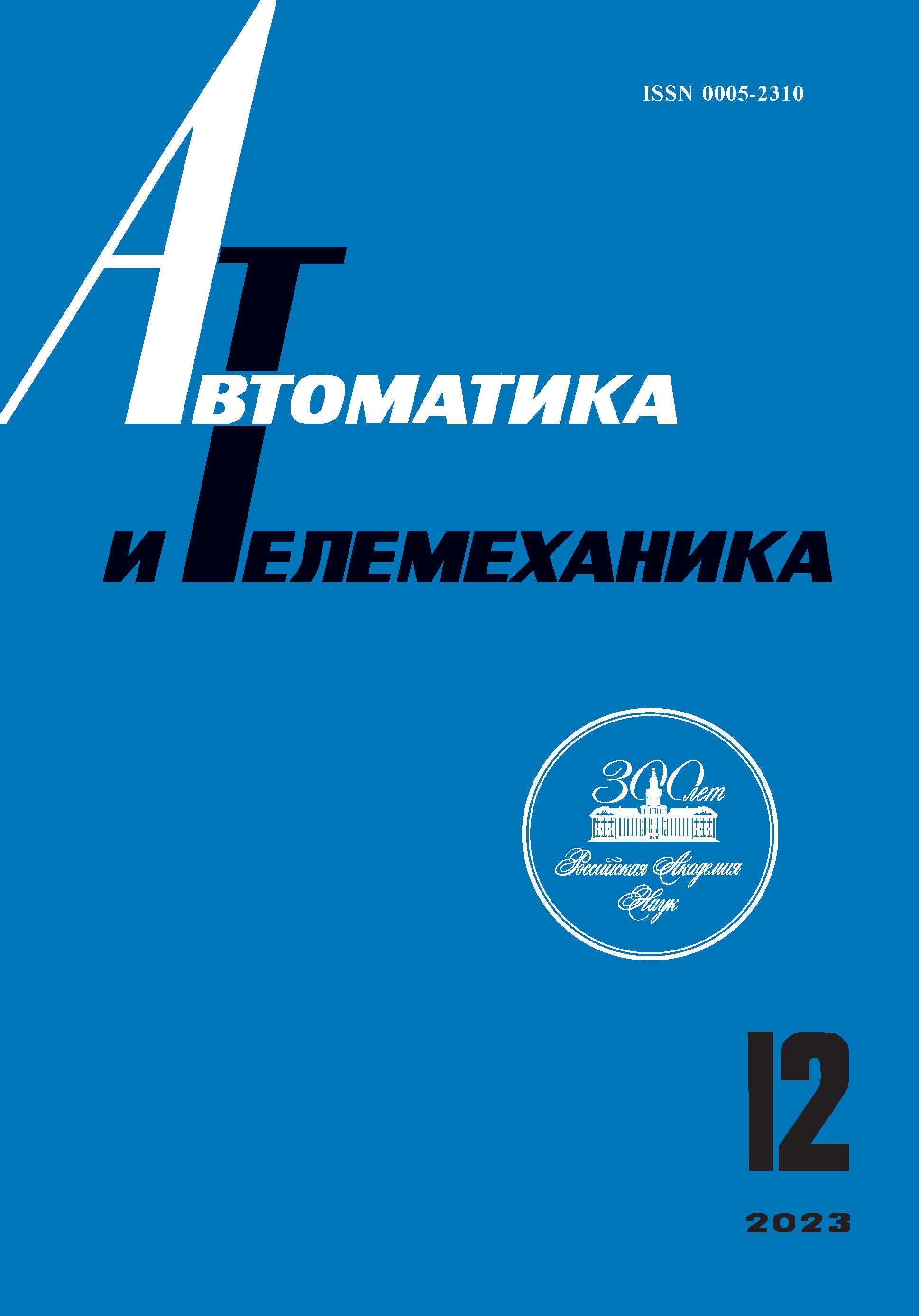Probabilistic Assessment of a Pentapeptide Composition Influence on Its Stability
- Autores: Mikhal'skiy A.I.1, Novosel'tseva Z.A.1, Anashkina A.A.2, Nekrasov A.N.3
-
Afiliações:
- Trapeznikov Institute of Control Sciences, Russian Academy of Sciences
- Engelgardt Institute of Molecular Biology, Russian Academy of Sciences
- Shemyakin–Ovchinnikov Institute of Bioorganic Chemistry, Russian Academy of Sciences
- Edição: Nº 12 (2023)
- Páginas: 38-48
- Seção: Topical issue
- URL: https://ter-arkhiv.ru/0005-2310/article/view/646886
- DOI: https://doi.org/10.31857/S0005231023120048
- EDN: https://elibrary.ru/NFXRAG
- ID: 646886
Citar
Texto integral
Resumo
The influence of the arrangement of amino acid residues in a pentapeptide on its stability is being studied. A forecast of pentapeptide stability is made using the gradient boosting method, which allows one to evaluate the influence of each feature on the stability of the pentapeptide. Combinations of amino acid arrangements in the pentapeptide have been identified that make a significant contribution to its stability. It has been shown that the use
of such combinations reduces the amount of data required to obtain a reliable prediction of pentapeptide stability.
Palavras-chave
Sobre autores
A. Mikhal'skiy
Trapeznikov Institute of Control Sciences, Russian Academy of Sciences
Email: ipuran@yandex.ru
Moscow, Russia
Zh. Novosel'tseva
Trapeznikov Institute of Control Sciences, Russian Academy of Sciences
Email: novoselc.janna@yandex.ru
Moscow, Russia
A. Anashkina
Engelgardt Institute of Molecular Biology, Russian Academy of Sciences
Email: a_anastasya@inbox.ru
Moscow, Russia
A. Nekrasov
Shemyakin–Ovchinnikov Institute of Bioorganic Chemistry, Russian Academy of Sciences
Autor responsável pela correspondência
Email: a_nnekrasov@mail.ru
Moscow, Russia
Bibliografia
- Senior A.W., Evans R., Jumper J. et al. Improved protein structure prediction using potentials from deep learning // Nature. 2020. V. 577. P. 706-710.
- Pereira J., Simpkin A.J., Hartmann M.D. et al. High accuracy protein structure prediction in CASP14 // Proteins Structure Function and Bioinformatics. 2021. V. 89. No. 12. P. 1687-1699. https://doi.org/10.1002/prot.26171
- Nekrasov A.N., Kozmin Yu.P., Kozyrev S.V. et al. Hierarchical structure of protein sequence // Int. J. Mol. Sci. 2021. V. 22. No. 15. 8339. https://doi.org/10.3390/ijms22158339
- Anashkina A.A., Nekrasov A.N., Alekseeva L.G. et al. A minimum set of stable blocks for rational design of polypeptide chains // Biochimie. 2019. V. 160. P. 88-92.
- Ke G., Meng Q., Finley T., Wang T. et al. A Highly Efficient Gradient Boosting Decision Tree // Proc. 31st Conference on Neural Information Processing Systems (NIPS). Long Beach. 2017. P. 3149-3157.
- Bergstra J., Yamins D., Cox D.D. Making a Science of Model Search: Hyperparameter Optimization in Hundreds of Dimensions for Vision Architectures // Proc. of the 30th International Conference on Machine Learning (ICML). 2013. P. 115-123.
- Lundberg S.M., Lee S.I. A unified approach to interpreting model predictions // Proc. 31st Conference on Neural Information Processing Systems (NIPS). Long Beach. 2017. P. 4765-4774.
- Mikhalskii A.I., Petrov I.V., Tsurko V.V., Anashkina A.A. et al. Application of mutual information estimation for prediction the structural stability of pentapeptides // Rus. J. Numer. Anal. Math. Model. 2020. V. 35. No. 5. P. 263-271.
Arquivos suplementares










